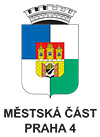Anna Hulačová: Katalog und Monolog
type: autorská
place of exhibition: Meyer Riegger Berlin
date of exhibition: 2017/03/10 - 2017/04/08
note:
The kitchen is not an unfamiliar motif in the visual arts, particularly in genre art. In the 20th century it paradoxically became a symbol for the shedding of traditions, epitomised, famously, by The Kitchen in New York, with its exploration of new art forms and media such as video and performance. At the time, the iconography of the kitchen was also used as a tool of subversion: in Martha Rosler's collage Red Stripe Kitchen (from the series House Beautiful: Bringing the War Home, 1967-1972) the kitchen is a space of social critique and political engagement; the same author also used the kitchen environment in her performance Semiotics of the Kitchen (1975), an ironic piece of feminist resistance against traditional female roles. Since then, the kitchen has been repeatedly used by feminist artists as a ‘battleground' or a scene for critical parody – for example in Birgit Jürgensen's Hausfrauen (1975), or in Helen Chadwick's cycle In the Kitchen (1977). The primary function of the kitchen – cooking – has also been utilized in many participatory art projects, from Alison Knowles to Rirkrit Tiravanija and others. At first glance, Anna Hulačová's exhibition at Meyer Riegger in Berlin returns the kitchen to its regular context: it treats it as a private space, inhabited by members of the basic social unit – the family. However, at second glance, it is apparent that the situation is more complex: the kitchen is seen as an emotional catalyst, a psychoanalytic clinic of a sort or a space for therapy sessions, where the ‘patient' is the spectator herself. Hulačová's art is characteristic for its formal and thematic richness, her associative method of work with both single statues and whole installations, and her use of powerful symbolism. All of this facilitates a sophisticated play with the spectator's consciousness and subconsciousness.
Naturally, the environment created in the Catalogue and Monologue exhibition builds upon her past work, however, it specifically develops certain aspects of her last exhibition Welcome Spring that took place at etc. gallery in Prague. While the earlier show outlined possible new avenues in her work, the current project is probably the most rigorous manifestation of Hulačová's interest in complex installations. The result is a unique environment in which the individual sculptures are situated. Another distinct change in her work is the monumentalization of the two-dimensional depictions Hulačová regularly integrates into three-dimensional objects. Here, these images (in the form of print on textile) function as a spectacular background, one that is not only decorative, but also full of significance. Fundamentally, it is a metaphor of the tension between the figures and objects in the scene.
The classical antipodal roles – man and woman – are both fostered and subverted here. Against the stereotype, the man is depicted by the kitchen counter, but he is deprived of the power to act – he has no hands. Meanwhile, the woman's hands are sticky with dough, but her signified contribution is meaningless as her face has been replaced with a picture of an orchid, making her a completely sexualized object, a thing entirely defined by the stereotypes of her gender and sexuality. In this constellation, only the child retains a human face, still behind its back, it shakes hands with an animal – the instinctive part of the human psyche. The remaining figures in the scene are represented only by fragments – phantoms and somehow also monuments to our mortality. When you look at the exhibition in its entirety, you can see that out of the spectrum of stylistic references to modern and contemporary forms of visual arts that the installation contains, the one that dominates here is the intuitive affinity with surrealism. You see something familiar, yet you cannot grasp it. Strangeness, Unheimlichkeit. Above, we discussed the motif of the kitchen in the context of media experiments, critical statements and interpersonal interaction. We can find all of these aspects in the Catalogue and Monologue exhibition. However, what strikes us as essential in Hulačová's work is the disturbing strangeness, and at the same time beauty, with which she can take something as banal as the kitchen, and something as traditional as figurative sculpture, and transform it into such an expressive, yet ineffable situation.
Tereza Jindrová









